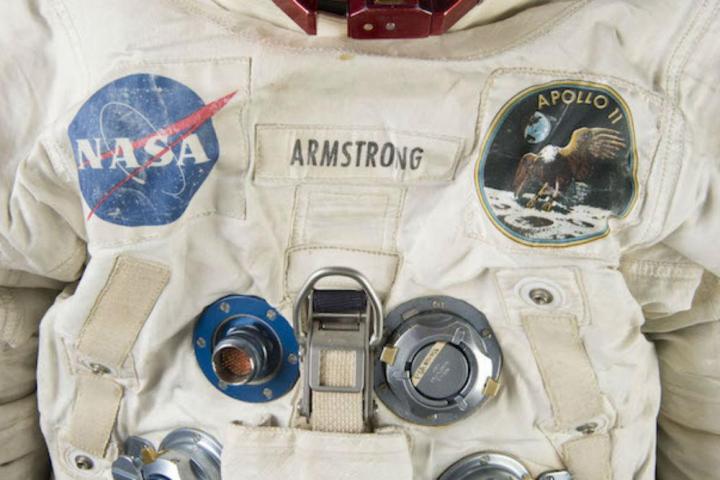
“For the Smithsonian’s first-ever Kickstarter campaign, we are proud to announce plans to conserve, digitize, and display Neil Armstrong’s Apollo 11 spacesuit in time for this milestone anniversary,” the organization’s campaign page reads. “We want to preserve Armstrong’s spacesuit – and the story it tells of its incredible journey – down to the particles of lunar dust that cling to its surface.”
A replica of the spacesuit is currently on display at the Smithsonian Museum in, but the actual suit that Armstrong wore on the moon (along with the rest of the spacesuits in the Museum’s collection) is currently being stored offsite in a special climate-controlled room that isn’t accessible to the public. It’s been in storage for the past 46 years, and in order to come out of safekeeping and into a public display, the suit requires special treatments to ensure that its fabric and components won’t deteriorate more than they already have.
Thing is, there isn’t really a standard protocol for preserving a spacesuit for hundreds of years. Nobody’s really done such a thing before, so a large part of the funding raised on Kickstarter would be put toward research, documentation, and consulting with people who made the suit and its materials. “As we complete this research,” the Smithsonian explains, “we’ll be using state-of-the-art techniques in 3D scanning, photogrammetry, chemical analysis, CT scanning, and other means available to create a detailed map of the suit that will document its condition in the most complete way possible. This work will inform a condition assessment that will help us create the appropriate environment for public display while preserving the suit in its current condition.”
The goal is to get everything preserved and ready to go on display before the 50th anniversary of the Apollo 11 mission, which will take place in 2019. At time of writing the project has raised about $55,000, which means its got a long way to go if it’s going to reach its ambitious $500,000 fundraising goal. That said, there’s nearly a month left before the campaign ends, so there’s still time for space buffs to help buff up Armstrong’s suit.
And the coolest part? This is just the Smithsonian’s inaugural project of this type. The organization plans to launch a series of different Kickstarter projects over the course of the next year. During this pilot year, the focus will be on artifacts, exhibitions, and projects that need funding, giving the public a variety of opportunities to support the Smithsonian based on their own interests.
Editors' Recommendations
- Watch Sierra Space blow up its LIFE habitat in dramatic pressure test
- Thursday’s spacewalk at the ISS has just been postponed
- NASA’s Frank Rubio has just done something very unusual in space
- Space bags are the next big idea to clean up orbital junk
- Inside the crazy plan to scoop up and bring home a bit of the Venus atmosphere




